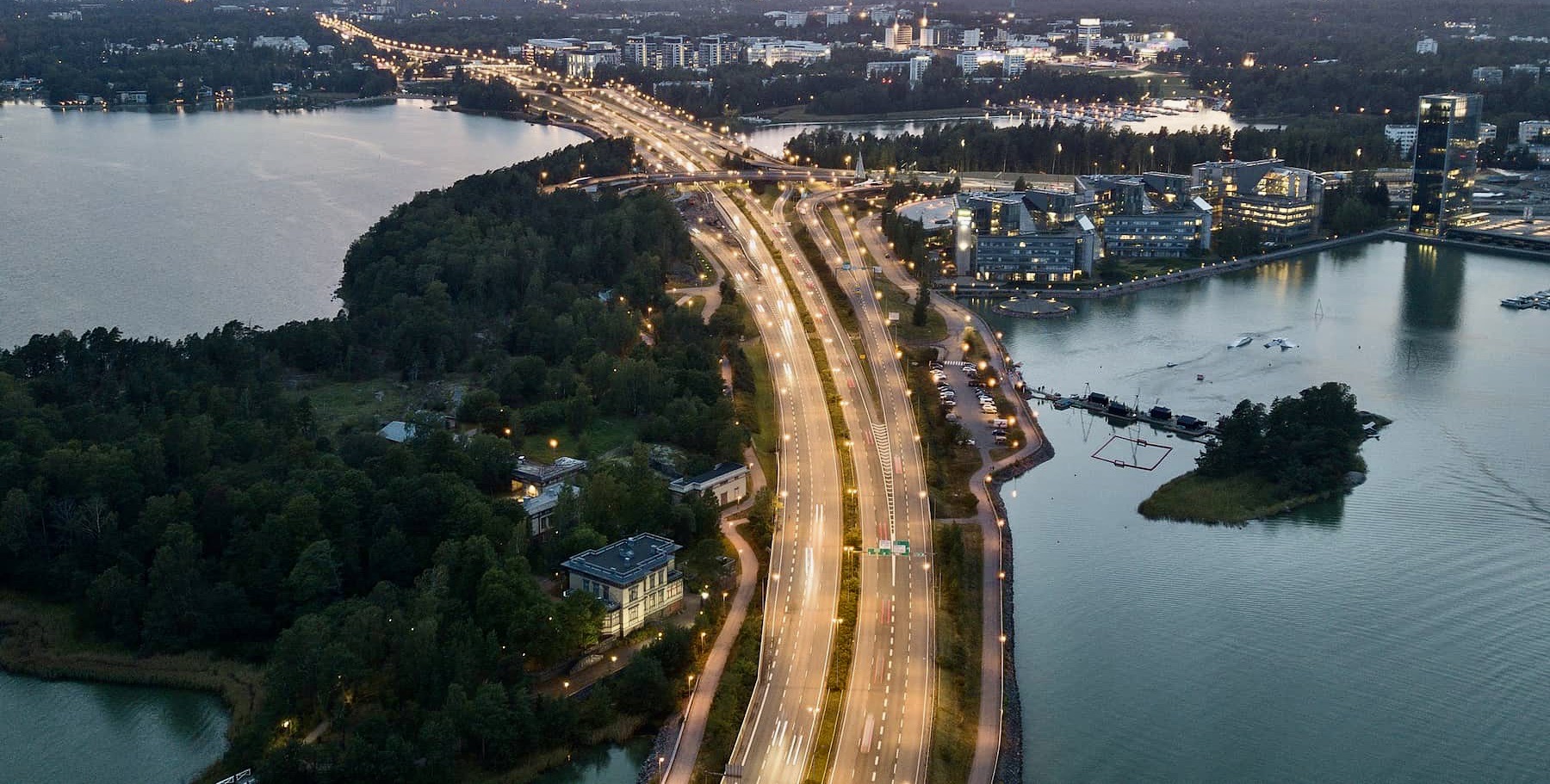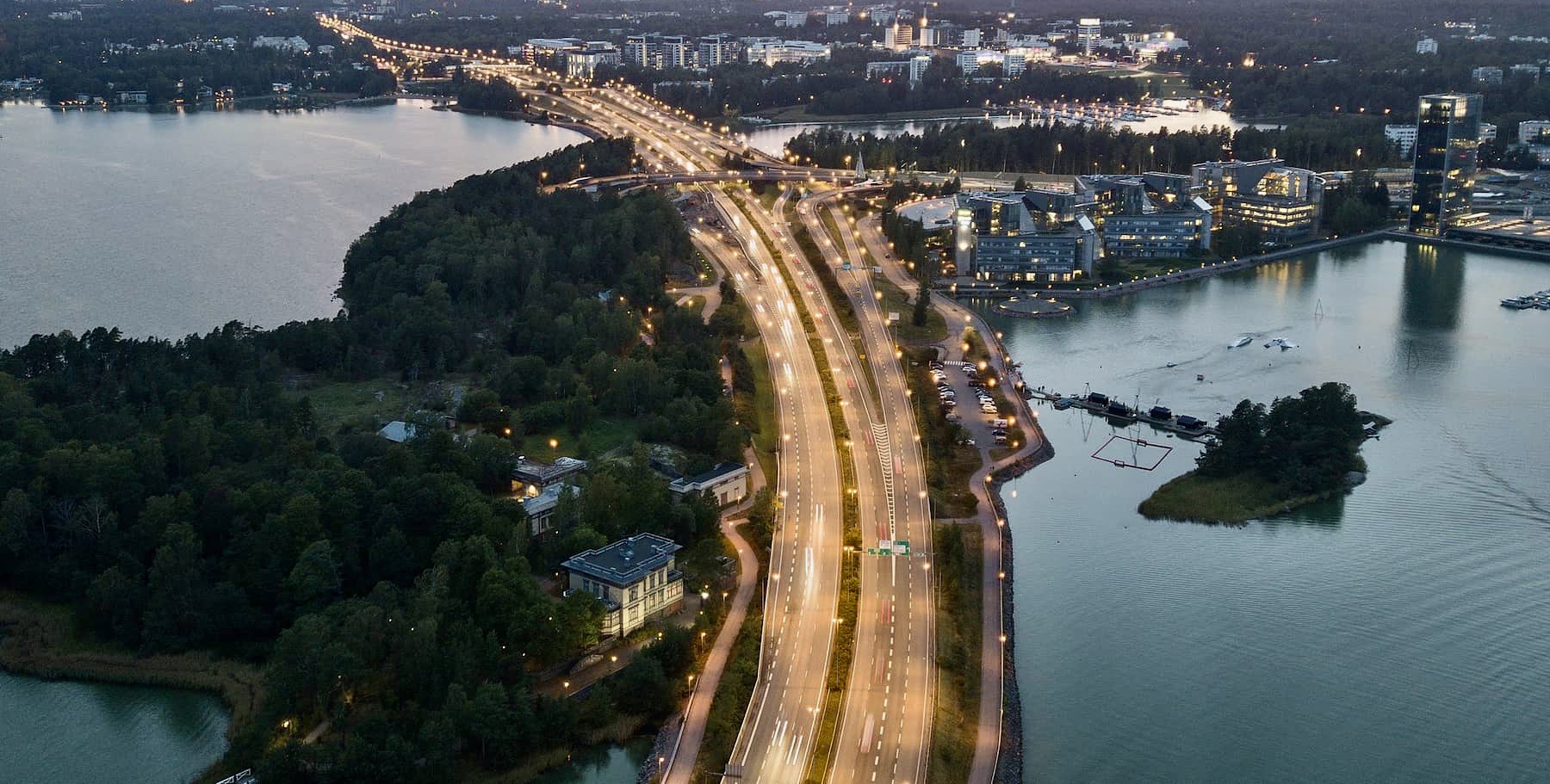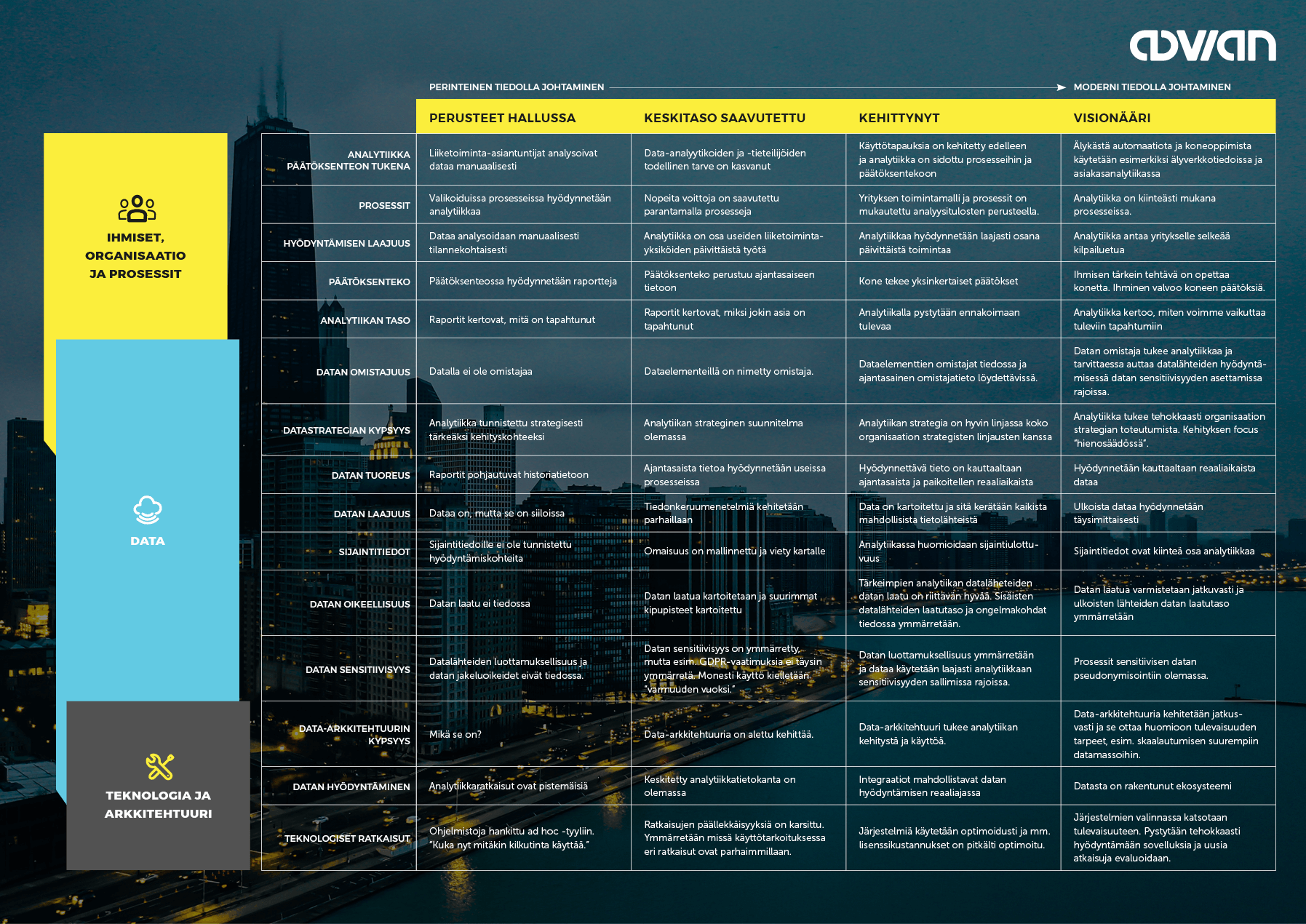CASE STUDY
A Finnish commercial bank was suffering from increasingly high annual operational costs and a GIS platform that was reaching the end of its lifecycle. Advian's team designed and implemented a total renovation of the architecture, leading to a dramatic drop of -64% of the GIS platform's annual costs. At the core of the solution was a migration to a serverless cloud architecture which uses open source solutions and open data, and is maintained by a state-of-the-art DevOps robot. The new system enables scalable and agile development projects in the future and costs only as much as it is being used.
This case study contains four chapters. Click on them below for a quick access:
- The challenge – Increasing annual operational costs and development needs
- Approach – An agile concept from roadmap to maintenance
- Results – A dramatic drop in annual operational costs
- Solution – Lifting the bank to a serverless cloud architecture
Let's dig in!
The challenge – Increasing costs and development needs
A Finnish commercial bank was suffering from increasingly high annual operational costs of their GIS platform. Moreover, a part of their current GIS platform was reaching the end of its lifecycle and in need of an expensive update. Sticking with the current solution would have led to sky-high annual operational costs and non-agile and costly development projects in the future.
👉 It was clear that a total renovation and modernisation of the bank's GIS platform's architecture was in place.
Approach – An agile concept from roadmap to maintenance
 Such an exceptional project required creative thinking and the utilisation of new technologies in a completely new way. Let's rewind to where it all started...
Such an exceptional project required creative thinking and the utilisation of new technologies in a completely new way. Let's rewind to where it all started...
Our team hosted a Location Intelligence Innovation -workshop to formulate the roadmap for the GIS platform's development. Consequently the team carried out a design phase to find alternatives for the implementation of the development project. The four-week long phase was divided into one-week design sprints spent iterating and designing architecture alternatives.
The design phase was a crucial stage of the whole project since neither ordinary nor traditional solutions could meet the bank's needs and face their challenges of which cutting costs was the biggest of all.
The following perspectives were considered in the design: Price of licenses, workload of the migration, staff training, costs of infrastructure and maintenance, technology and information security guidelines, and readiness for further development in terms of scalability, functionality, and performance.
As a result, Advian's team proposed a plan for a new GIS platform architecture that would reduce annual operational costs by roughly 80%.
💡 Psst. Click here for a visualisation of the serverless cloud architecture!
Next, with the idea and plan in our back pocket, was the migration itself to the new architecture, which required a lot of know-how and can-do attitude from the whole team. The migration realised the value of all the previous phases involving some more iteration and tweaking. After the project, Advian also takes care of the maintenance of the renewed GIS platform.
Results – A dramatic drop in annual operational costs
Our team's modernised architecture led to a dramatic decrease of continuous costs, including licenses, infrastructure and maintenance work. The bank went from an annual operational cost of 122 000 euros to 43 434 euros a year, resulting in a -64% decrease.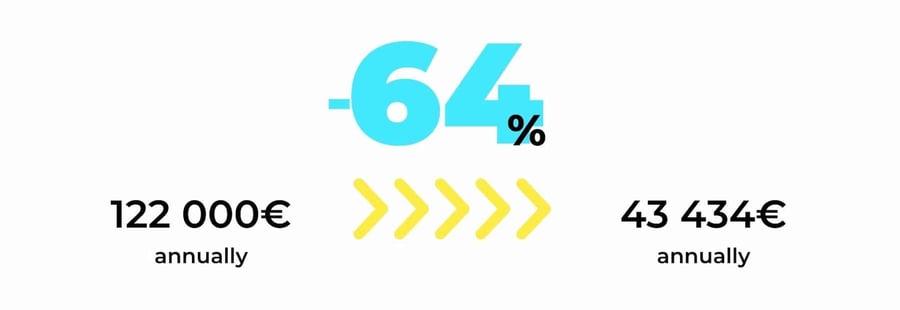
Not only did the new solution cut in costs, but it also caters for any development needs in the future. The old architecture had a stair-step pricing model meaning that future development opportunities were paid for in advance. This led to the bank paying for much more than what they needed, making smaller development needs harder to justify for. The new solution makes development scalable according to needs and costs only as much as it is being used.
During the project, a new challenge arose that needed to be tackled. The bank was facing unsatisfied Data Scientists who struggled with a slow and stiff web server while working with an immense volume of data. The architecture was extended to meet this need as well. In the end, the modernised architecture enables fast mass geocoding which makes the Data Scientists' work smarter and more efficient. Moreover, the end-user experience for the other users of the platform was improved due to pre-calculations and faster response times.
Solution – Lifting the bank to a serverless cloud architecture
The solution entails four key points that you'll find below: Architecture, maintenance, product & data, and pricing.
1 Architecture

On-premise architecture and static hardware is a costly alternative that runs continuously. Advian's team's solution replaced the old on-premise model with a light serverless cloud architecture and automatised infra optimization, that lives and breathes exactly according to needs and use. There are no reserved serves in a data center, but rather a cloud that is scaled when needed.
2 Maintenance
 Previously if there were needs for changes in the system, the maintenance was done manually. The new solution uses a DevOps robot to constantly monitor the system and react in advance. A high quality state-of-the-art DevOps enables solution utilisation even in demanding conditions.
Previously if there were needs for changes in the system, the maintenance was done manually. The new solution uses a DevOps robot to constantly monitor the system and react in advance. A high quality state-of-the-art DevOps enables solution utilisation even in demanding conditions.
3 Product & Data

Traditional ready-made commercial off-the-shelf (COTS) products and commercial data require firms to purchase a license to be able to use them, and the price tag can be quite heavy. In many cases, firms end up paying for more than what they actually need. Instead, switching to open source code that is available for anyone to develop and open data that is not behind a paywall lowers costs immediately.
4 Pricing
 Instead of paying a fixed price for all infrastructure, licenses and maintenance regardless of the degree of use, a pay-as-you-go model enables a tailored pricing dependent on when and how much the solution is used.
Instead of paying a fixed price for all infrastructure, licenses and maintenance regardless of the degree of use, a pay-as-you-go model enables a tailored pricing dependent on when and how much the solution is used.
Simplified solution architecture
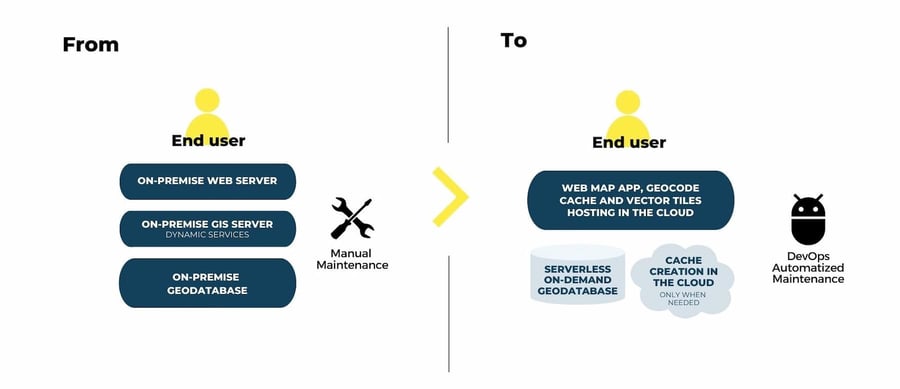
Above you can see a simplified solution architecture, showing the old architecture on the left-hand side and the new one on the right-hand side. At first glance, it's evident that the modernised version is lighter without a static infrastructure, and as previously mentioned, its capacity is scalable according to the needs of the users.
/ If the world doesn't change, everything is pre-calculated
The serverless on-demand cloud database runs only when needed and disappears when it's not. For instance, data requests on unchanged data are available instantly in the cache cloud. However, data requests on data that has been changed or cannot be retrieved from the cache, are requested from the serverless on-demand geodatabase. Simply put, if the world doesn't change, everything is pre-calculated and ready. Otherwise the system spins through the lightly coloured pieces of the architecture to update. Moreover, in the new architecture, there is no GIS server at all, since the cache is updated using SaaS capabilities.
Do you have a question about the solution architecture?
We are happy to answer 👇
Sujan Dahal, Advian's GIS Data Architect, who was as a big part of the team tells how the project evolved over time:
"The scope of this project turned out to be much broader and deeper than first intended. The final solution is the result of many rounds of iteration and development together with the team and the customer. As a team and also as individuals we had to learn a lot on the way, since no one has done anything similar in this scale. Also, working and deploying in a cloud environment was something new and exciting for me," Sujan comments.

The team's GIS Data Engineers Jeison Londoño and Jere Virolainen agrees that the project required learning on the way and adapting to new systems. They both worked closely with geocoding, Jeison with the interface and Jere utilised the interface in the geocoding itself. Jeison tells that the biggest challenge was adapting address structures to match to the Finnish address specifications and to get the accuracy score on a sufficient level, for example by fuzzy string matching.
The migration with its intricate technical architecture turned out to be the most interesting part for Jere, who also worked with publishing the materials to the new GIS platform:
"It was cool to learn how the process was done in the past, which was very complex. My responsibility was also to publish the materials to the new platform, but it wasn't completely error free. Sujan and me both worked hard on debugging and getting everything right," Jere comments.
Getting the intricate architecture working smoothly was for the whole team the most rewarding part of all, since there were a lot of moving parts. For example, making sure that the DevOps robot works according to the customer's standards and requirements, which there was a long list of. Additionally, they concluded that working with an organisation of this size has its challenges, but Jere highlights that it was very pleasant to work with like-minded tech professionals to get into the nitty gritty details.
Want to hear more about the benefits of serveless cloud architecture? Contact:
Laura Tuomikoski, Senior Advisor, Partner, +358 50 367 1182
Topics: News, Location Intelligence, Advanced Analytics, Consulting





